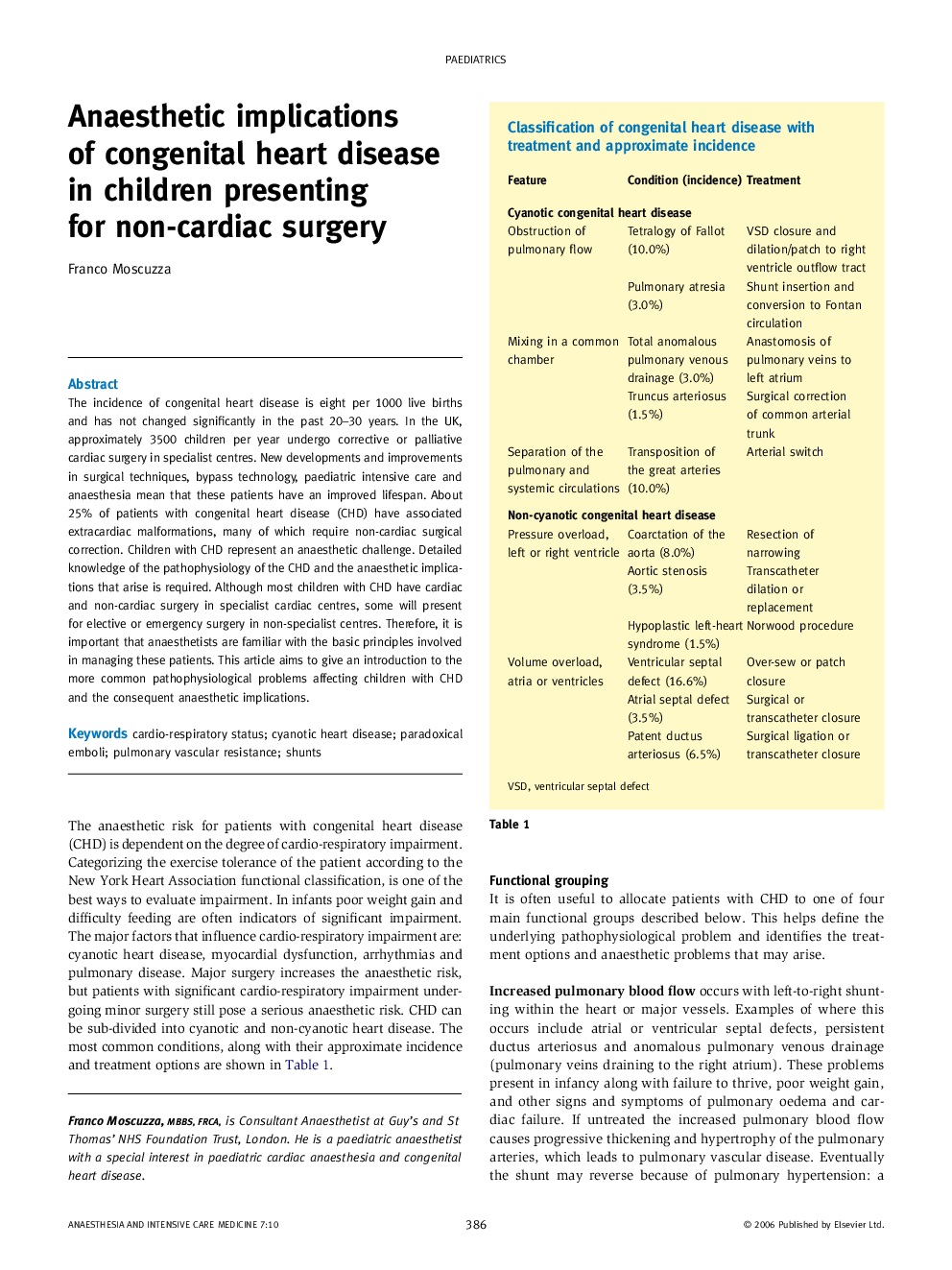| Article ID | Journal | Published Year | Pages | File Type |
|---|---|---|---|---|
| 2743203 | Anaesthesia & Intensive Care Medicine | 2006 | 5 Pages |
The incidence of congenital heart disease is eight per 1000 live births and has not changed significantly in the past 20–30 years. In the UK, approximately 3500 children per year undergo corrective or palliative cardiac surgery in specialist centres. New developments and improvements in surgical techniques, bypass technology, paediatric intensive care and anaesthesia mean that these patients have an improved lifespan. About 25% of patients with congenital heart disease (CHD) have associated extracardiac malformations, many of which require non-cardiac surgical correction. Children with CHD represent an anaesthetic challenge. Detailed knowledge of the pathophysiology of the CHD and the anaesthetic implications that arise is required. Although most children with CHD have cardiac and non-cardiac surgery in specialist cardiac centres, some will present for elective or emergency surgery in non-specialist centres. Therefore, it is important that anaesthetists are familiar with the basic principles involved in managing these patients. This article aims to give an introduction to the more common pathophysiological problems affecting children with CHD and the consequent anaesthetic implications.
